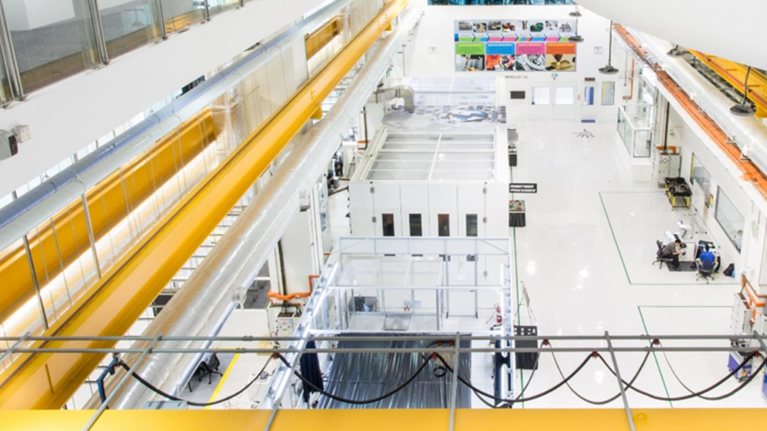Implementing new manufacturing technologies—collectively known as Industry 4.0—in Indonesia can deliver a substantial boost to the nation’s economy. To succeed, however, government and businesses must find ways to encourage greater confidence, create robust ecosystems, and help early adopters move past the “pilot trap.”
Stay current on your favorite topics
Conversations around the pilot trap and other hurdles manufacturers face in adopting the newest technologies are crucial if Indonesia and other countries are to be equal partners amid a changing global economy. Public and private leaders recently met in Davos, Switzerland, for the World Economic Forum’s annual meeting. Central to this year’s theme is using the Fourth Industrial Revolution, or Industry 4.0, to ensure that globalization becomes more inclusive.
Manufacturing is vital to Indonesia’s economy
Manufacturing accounts for about 18 percent of Indonesia’s GDP, creating an imperative to accelerate the adoption of new digital technologies. One recent McKinsey study estimated that digitization could add $120 billion to Indonesia’s economic output by 2025, with more than a quarter of this—about $34 billion—coming from manufacturing. No other sector comes close to this potential.
Stakeholders in Indonesia are preparing for Industry 4.0. In April, the country launched Making Indonesia 4.0. Among a wide range of themes, the initiative includes incentives for the country’s 3.7 million small and mid-size enterprises to adopt new technologies—a critical component since small businesses are generally most reluctant to assume risks.
Business leaders are also aware of Industry 4.0 opportunities. A McKinsey survey of managers in Indonesia and five other large members of the Association of Southeast Asian Nations (ASEAN) found that the overwhelming majority of respondents acknowledged the potential of Industry 4.0 and optimism was growing. And in a forum in December organized by Asosiasi Pengusaha Indonesia, the national employers’ association, the group’s chairman, Hariyadi Sukamdani, urged the industry to prepare for “the challenges of Industry 4.0.”
The McKinsey study also showed that few companies were making significant headway in implementing the technologies. Only 13 percent of the respondents said their companies had made any attempt to implement Industry 4.0 technologies, citing obstacles such as unclear business cases, insufficient IT integration, cybersecurity concerns, and a lack of talent.
The pilot trap poses surmountable challenges
Perhaps just as concerning, however, is that many companies that have made an effort fell quickly into the pilot trap, which blocks any attempt at broader implementation. A separate global McKinsey study found that of the companies that have launched Industry 4.0 pilots, 78 percent went no further, including 31 percent that had yet to try to scale up the initiative two years or more after the pilot.
Reasons for stalling after a pilot echo those generally offered for avoiding Industry 4.0 altogether. Chief among these are that short-term gains don’t seem to justify the business case for digital transformation, difficulties emerge in integrating IT systems and data, and there is little coordination among the various functions—IT, marketing, and sales, for instance—that must all support any digitization initiative.
Would you like to learn more about the Singapore Digital Capability Center?
In addition, pilots are often badly conceived. For example, pilots are designed around the interests of the most vocal internal advocates of Industry 4.0 rather than focused on solutions that meet an organization’s broader needs. Pilots can also fall short because managers underestimate the extent of organizational and cultural change needed for a broader roll-out, and as a result the pilots remain isolated, stand-alone programs.
In some ways, the pilot trap might be more damaging than hesitation: senior executives might believe they’ve dipped their toes in Industry 4.0 and found the water too cold. As a result, the inertia becomes more difficult to overcome, enthusiasm wanes on the back of “failed” pilots, and companies miss opportunities to deploy new technologies to cut costs, increase revenues, and perhaps even to remain competitive.
Clear focus can overcome hurdles
Our research and industry experience show the pilot trap can be avoided and transformations will succeed if companies focus on technologies with the greatest potential impact on their strategic goals, such as improving customer services and operations. By keeping long-term goals at the forefront and avoiding quick fixes to isolated problems, companies are more likely to get the senior commitment and enthusiasm needed for a large-scale transformation.
Beyond internal changes, the industry’s ecosystem can also help companies beat the pilot trap. For example, industry forums can bring leaders together to share experiences and exchange best practices. Test beds, such as McKinsey’s Digital Capability Center in Singapore, can provide a low-risk venue to test new strategies and demonstrate their impact. Efforts such as these within an ecosystem can build confidence and encourage early adopters.
Until Industry 4.0 is more common, a sense of unease is natural for executives bold enough to take the first step. Falling into the pilot trap can spook many. Embarking on the transformation with a clear strategic vision, an understanding of how technology can be used profitably, and an ecosystem that shares experiences can help chase away these uncertainties and deliver on the potential of Industry 4.0.
This article is adapted from an article that appeared in the Jakarta Post on January 23, 2019, and is reprinted here by permission.


